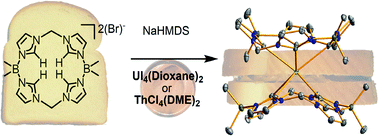Alum Spotlight – Neal

Sabine Neal, born and raised in western Montana, graduated with her PhD working with the Musfeldt Lab in May 2021.
“The Musfeldt lab provided me with a lot of opportunity. Musfeldt knew I was a single parent and looked past that, believing in me, and giving me so many invaluable experiences,” Neal said. “I had a chance to work at two national labs, collaborate with scientists all over the world, travel to conferences, and employ cutting edge technology to study two-dimensional systems.”
Neal began working at Brookhaven National Lab in January 2021 as a Research Associate in Materials Science as a part of the Interface Science and Catalysis group at the Center for Functional Nanomaterials.
Neal’s expertise primarily lies in infrared and Raman spectroscopy and currently works on a broad array of instrumentation including both NanoIR, Photothermal, and nanoprobe systems to study high energy materials. She also uses LEEM and LEED to grow and characterize thin films.
“UT’s chemistry graduate program helped me prepare in several ways. First, the hands-on training in the lab was crucial. I know how to trouble shoot, maintain lab equipment, and work independently. Second, the many conferences, visitor presentations, and group talks helped to cultivate my communication skills,” Neal said. “Being a TA also helped me learn how to communicate effectively to different groups/skill levels of people. I really enjoyed working with the students and general chemistry staff. Finally, I had three stand-out professors that aided in my personal journey to obtain my degree: Musfeldt, Sharma, and Kilbey.”
“As a single parent, most people have told me what I couldn’t do. I couldn’t get a bachelor’s degree. I did. I couldn’t get a master’s. I did. And most wouldn’t have believed I could earn a PhD. But I did,” Neal said. “You can do anything that you want if you put your mind to it and work hard. Stand up for yourself. Do what makes you happy. There is no limit!”





 The complexes were characterized by a range of experimental methods and DFT calculations. X-ray crystallography confirms the geometry at the metal centre can be set by the size of the macrocyclic ring, leading to either square prismatic or square anti-prismatic shapes; the geometry of the latter is retained in solution, which also undergoes reversible, electrochemical one-electron oxidation or reduction for the uranium variant. DFT calculations reveal a frontier orbital picture that is similar to thorocene and uranocene, in which the NHC ligands show almost exclusively σ-donation to the metal without π-backbonding.
The complexes were characterized by a range of experimental methods and DFT calculations. X-ray crystallography confirms the geometry at the metal centre can be set by the size of the macrocyclic ring, leading to either square prismatic or square anti-prismatic shapes; the geometry of the latter is retained in solution, which also undergoes reversible, electrochemical one-electron oxidation or reduction for the uranium variant. DFT calculations reveal a frontier orbital picture that is similar to thorocene and uranocene, in which the NHC ligands show almost exclusively σ-donation to the metal without π-backbonding.
